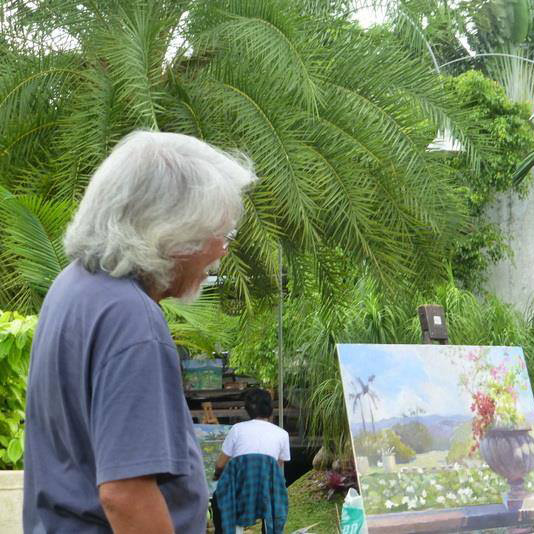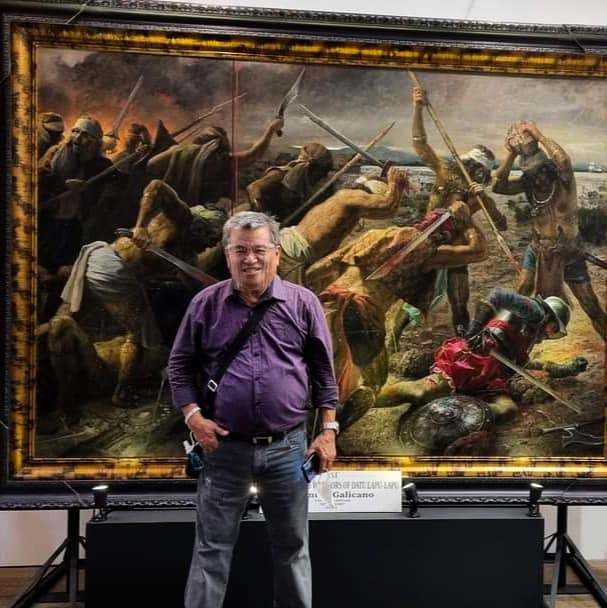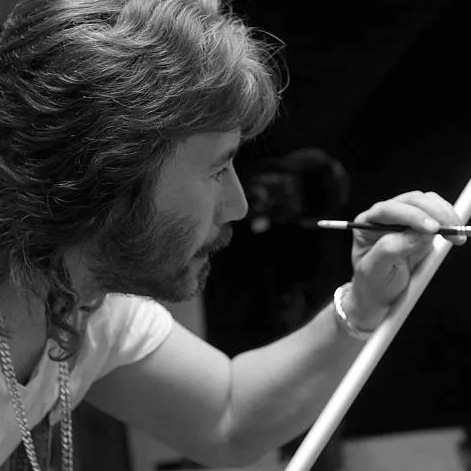Biography
Martino Alcoseba Abellana
1914 – 1988
Carcar City, Cebu
Martino Abellana, affectionately known as “Maestro Tinong,” is revered as the “Dean of Cebuano Painters.” He dedicated his life to creating captivating masterpieces and nurturing aspiring artists, profoundly shaping Cebuano art.
Born in Carcar City, Cebu in 1914, Abellana’s artistic passion was ignited early on by his sculptor father, Teofilo and painter grandfather, Gonzalo. He pursued formal art education at the University of the Philippines Manila School of Fine Arts, graduating in 1938, where he studied under masters like Fernando Amorsolo, Guillermo Tolentino, and Vicente Rivera Mir.
After returning to Cebu before World War II, Abellana’s ancestral house became a makeshift home studio for students to come and learn art from him. In 1946, he became one of the pioneering faculty of the now Cebu Institute of Technology-University. He taught decorative arts, drafting, and sketching to architecture students.
Decades later, Abellana’s legacy was cemented as he co-founded the Fine Arts Program at the University of the Philippines Cebu in 1975, with contemporaries Julian Jumalon and National Artist Jose T. Joya. He commuted daily from Carcar to Cebu City, tirelessly sharing his wisdom through engaging lectures and studio sessions that inspired his students. He would often discuss beyond the class hours, with his students choosing to stay and listen to the knowledge he so generously imparted. During the weekends, he encouraged students to stay at his house and practice plein air, refusing to confine his teachings within the four walls of the university.
Abellana was a master of tonal painting, renowned for his realistic portraits, meticulously crafted to convey volume, light, and shadow. He skillfully transformed black-and-white photographs into vibrant, lifelike images by applying a scientific understanding of the color wheel, using warm tones for sunlit areas and cool hues for shadows.
His modernist prismatic style captured the dynamic essence and tropicality of Cebu in his landscapes, utilizing vibrant colors and bold brushwork inspired by French Impressionist Michel-Eugene Chevreul. Beyond technique, his humanistic genre paintings portrayed the daily lives, struggles, and warmth of Filipino families, often using relatives and local farmers as subjects.
As an educator, Abellana believed art was a way of life, emphasising desire, enthusiasm, and hard work over mere talent. He encouraged students to “reimagine” subjects and embraced diverse expressions, understanding art through “polar extremes and tensions”.
Martino Abellana passed away on 5 March 1988 at the age of 74, leaving an enduring legacy within Philippine art. His contributions remain widely recognized and celebrated. Revered as the ‘Dean of Cebuano Painters,’ Abellana played a pivotal role in shaping Cebu’s artistic landscape, establishing the foundations for the vibrant and dynamic community that flourishes today. His profound influence continues through the generations of students he mentored, many of whom have achieved distinction as accomplished artists in the Philippines and on the international stage.
The Abellana Method
The Abellana Method is an encompassing artistic philosophy developed by Martino Abellana; a blend of technical mastery, authentic representation, and a commitment to art education, rooted in a dualistic approach to painting: tonal painting for portraits and prismatic modulation of color for landscapes
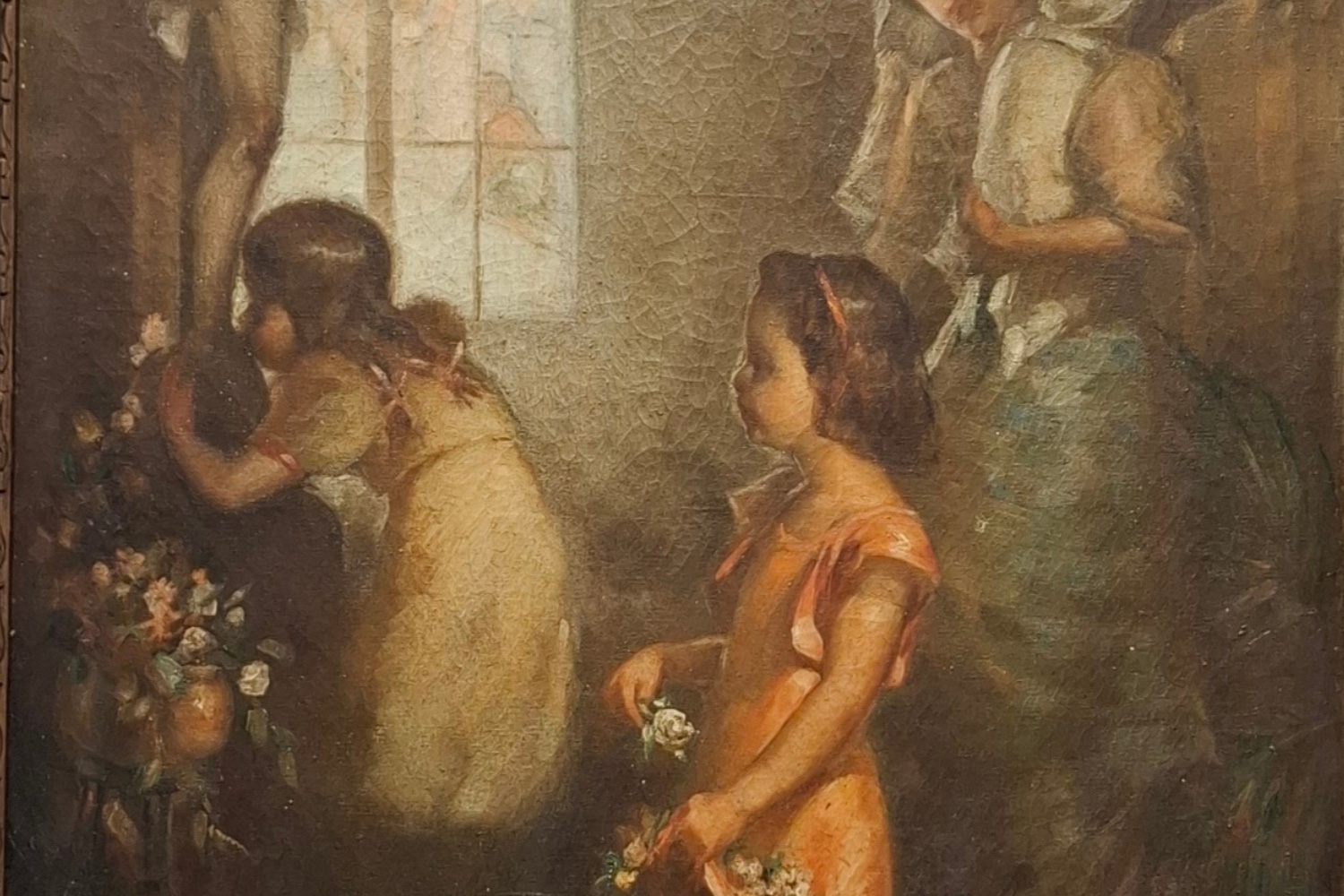
Untitled (Floral Offering), 1947
Tonal Painting
For portraits, Abellana mastered tonal painting, meticulously creating realism through the illusion of volume, light, mass, and shadow. He skillfully transformed black-and-white photographs into vivid images using a scientific understanding of the color wheel, applying warm tones for sunlit areas and cool hues (purples, violets, blues) for shadows, thereby demonstrating that they are never purely black. Upon their placements, all colors were then blended so subtly, hues melding together seamlessly. This precise technique allowed him to achieve impeccable, natural skin tones—a hallmark of his commissioned works.
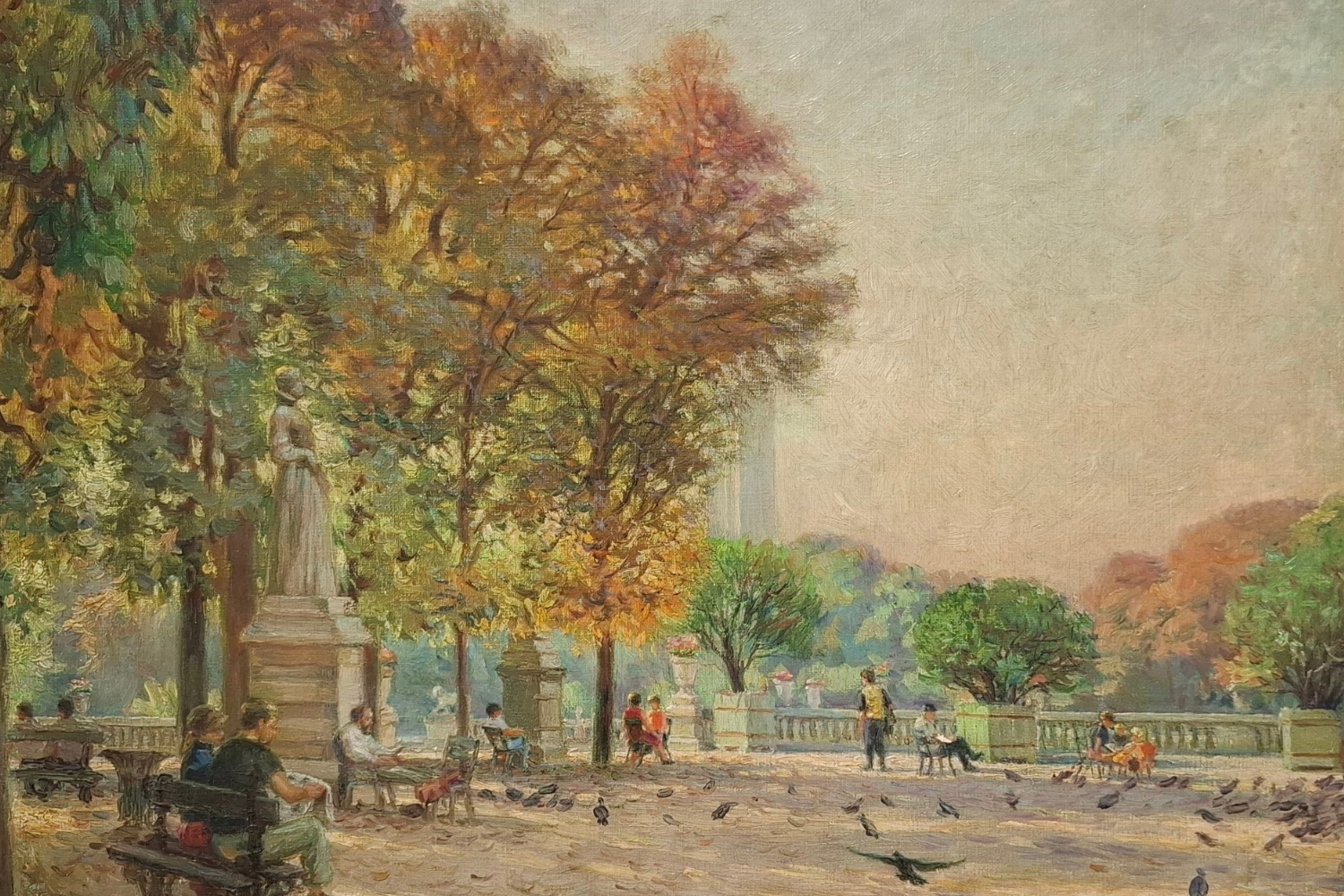
Untitled (Floral Offering), 1947
Prismatic Modulation of Color
In his landscapes, Abellana adopted a modernist prismatic style titled, “Prismatic Modulation of Color”, greatly influenced by Michael-Eugene Chevreul’s The Law of Simultaneous Contrast. He aimed to capture the dynamic essence of nature, particularly the tropical beauty of his hometown Carcar, Cebu, through vibrant colours and striking brushwork; most especially by painting at high noon when the rays were at their brightest. His goal was to “preserve the strength and sharpness of the individual colour” and “the brilliance of nature, of our climate and sunlight”, allowing the viewer’s eye to blend these broken colours into cohesive forms from a distance—seemingly inviting the viewer to participate in his works.
Foregrounding the Ordinary
Beyond its technical aspects, the Abellana Method is deeply humanistic, celebrated for “foregrounding the ordinary”. Abellana depicted the daily—often arduous—work and domestic routines of ordinary people, highlighting the warmth of families by using relatives, and neighbours as subjects. At a time when conventions of art put the spotlight on European standards of beauty, Abellana chose to put distinctly Filipino features, particularly that of laborers’ hardened bodies and calloused hands and feet for his non-commissioned works. Coupled with the unmistakable Cebuano landscapes, his approach fostered a compelling “Sugbuanon(1)” realism, portraying the true conditions of human life rather than romanticised ideals common to his predecessors.
His profound connection to his beloved hometown Carcar permeated his art, transforming his landscapes and genre paintings into heartfelt celebrations of local life and the region’s inherent beauty. He resisted the conventions of the Luzon-based artist, choosing instead to highlight his Bisaya identity at the forefront of his works(2).
1 Maceda, Teresita Gimenez (2015). Foregrounding the Ordinary: The World Through the Eyes of Martino Abellana.
2 Fernandez, Raymund L.. (2017). Kamingaw: An Impressionist Portrait of the Bisaya Painter Martino A. Abellana. University of San Carlos Press.
Pedagogy
As an educator, Abellana’s method championed art as a lifelong process of discipline, focus, and enthusiastic hard work. He consistently taught that desire and enthusiasm, combined with diligence, were far more crucial than talent alone. He taught the fundamental principles of light, mass, space and volume. Ultimately, he viewed art as “a way of life” that embraces “polar extremes and tensions,” that allows for diverse expressions and compositions.
His philosophical and multifaceted methods went on to inspire purposeful and passionate creation among the generations of students who came after him.

